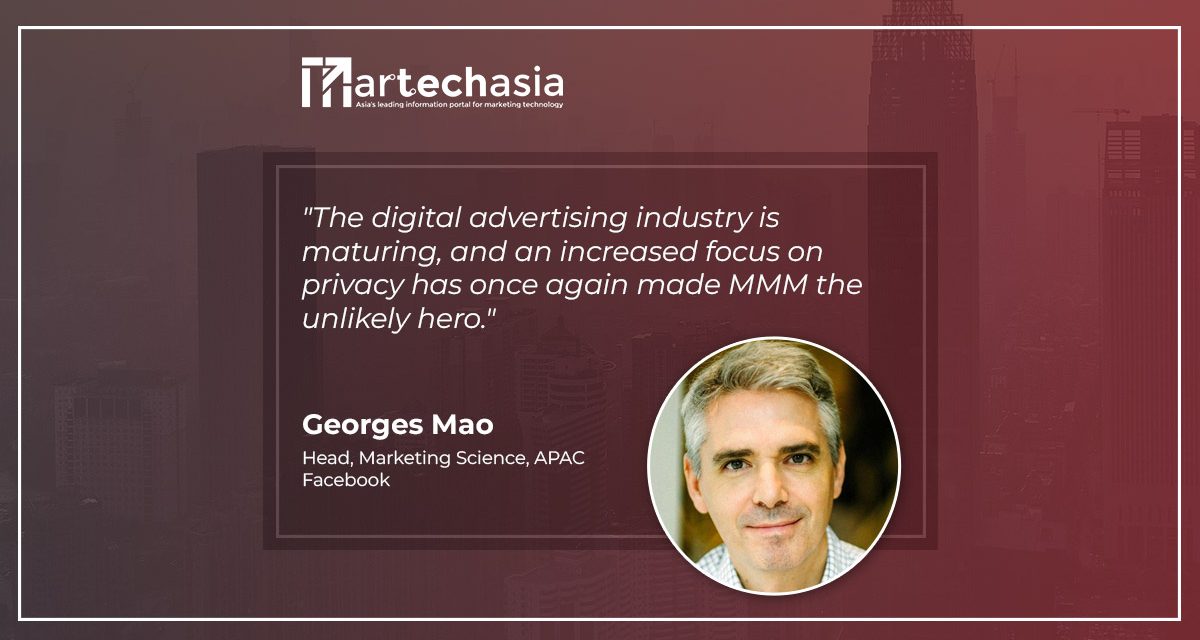What are the five checklist CMOs must ask to transform MMM into a tool for the future?
It is a marketing maxim that measuring outcomes of marketing investment is fundamental for building data driven organisations. However, the rapid changes in the regulatory environment as well as policies being adopted by technology companies are disrupting the current digital advertising and measurement solutions. The advertising ecosystem is rapidly evolving and measurement needs to evolve with it.
Marketing Mix Modeling (MMM)
Econometrics – the practical application of economic theory – has been in use in business for some time. Within this exists the marketing arm of the process of econometrics, namely MMM.
Statisticians ingest a number of variables that could impact sales and, through a process of regression, figure out which of the marketing channels or other factors (identified variables such as price discounting, competitor activity etc.) was having the biggest impact. The data collection, analysis and then technique application to get to usable information in MMM has been a long and expensive process requiring specialists. As a result, MMM modelling was typically an annual event, neither dynamic nor driving timely actions. This made the approach less attractive to businesses with agile decision-making environments.
Digital advertising and the rise of causality
The plethora of data available in digital marketing enabled a whole industry to look at the link between activity and sales. While many fall into the first trap of identifying only the last touchpoint before a sale is conducted online, the majority of marketers knew that was way too simplistic and incorrect.
Up until five years ago, it was not possible to easily look scientifically at different groups of people at scale and determine whether their exposure to advertising had led to an action. Through implementation of experimental methods with measurement solutions like conversion lift and brand lift, marketers could now see whether their ad executions on a given channel/publisher were truly driving actual behaviour.
A funny thing happened on the way to the future
The digital advertising industry is maturing, and an increased focus on privacy has once again made MMM the unlikely hero. Advertisers will have to seek out new signal resilient and privacy preserving techniques to understand ad effectiveness. They need to be able to operate with their own data, where they are in control of complying with all necessary data regulations of ownership and processing of that data.
It’s also becoming clear that MMM is no longer a technique reserved to large, established teams within traditional brands. Digital natives & mobile-app advertisers are already shifting toward MMM and innovating at a rapid pace, redefining how MMM is done for pure players.
(Re) enter the ‘Econometric Hero’
The legacy MMM approach has various challenges

These MMM limitations are well known and the MMM ecosystem has been investing and innovating to mitigate these. With the rapid growth in data science resources and computing power, there is an increase in attempts to solve these. A contemporary MMM would be designed to overcome these challenges

These are five things CMOs must ask to transform MMM into the tool for the future:
- How can MMMs be built quicker?
Solutions now exist to automate MMM builds – Demand Drivers by Analytics Edge, for example. Brands can now leverage the power of cloud-based technology to help accelerate the frequency of delivery of insights. MMM can be built quicker with the right tools and data strategy. ASUS has been adopting this approach in their business.
- How can we take more variables into the modelling?
Models should be run across as much advertising activity as possible.
The goal is to get constant learnings on as many campaigns as possible. It may mean that, in the short run, digital-only MMM may become the norm, while quick data availability and lower costs would allow for non-digital channels and other factors to be baked in quickly.
- Could we build this ‘in-house’ in a cost-effective way?
To build in-house requires expertise. This needs investment in people and in tools. It can lead to more flexibility than outsourcing. It may mean partnering with agencies and consultancies, but in a very different way. Open-source codes, including Facebook’s project Robyn, are both a reflection and a catalyst of these changes. Set a three-year plan, starting with collaborating with your MMM provider, and ending with this MMM provider being a consultant to your in-house team of experts.
- How can we ensure that models are accurate?
Removing bias completely from models is not achievable in the short term. However, minimising these biases is achievable now. Validation and calibration of MMM results with experiments run on and off Facebook should be a minimum requirement.
CMOs have to make multi-million-dollar decisions and holding these decisions to a higher degree of accuracy is key. Deloitte went ahead and has already developed validation and calibration techniques within MMMs it built. The 2021 Deloitte White Paper provides more details.
- How can the modelling results show that it is worth the investment?
This is a topic for CMOs to ask themselves as much as their MMM provider. The results and efficiencies for your business are only useful if actions are taken as a result of the modelling. Put actionability at the core. Request forecasting and simulations to be done and verify their accuracy over time.
Marketers who adopt rapid modelling alongside causal testing will be in the best position to understand advertising efficacy. As with everything companies have done in building successful businesses, if it were easy everyone would have done it. Those that make the choice now to invest time and resources in building this out will be the winners.



















